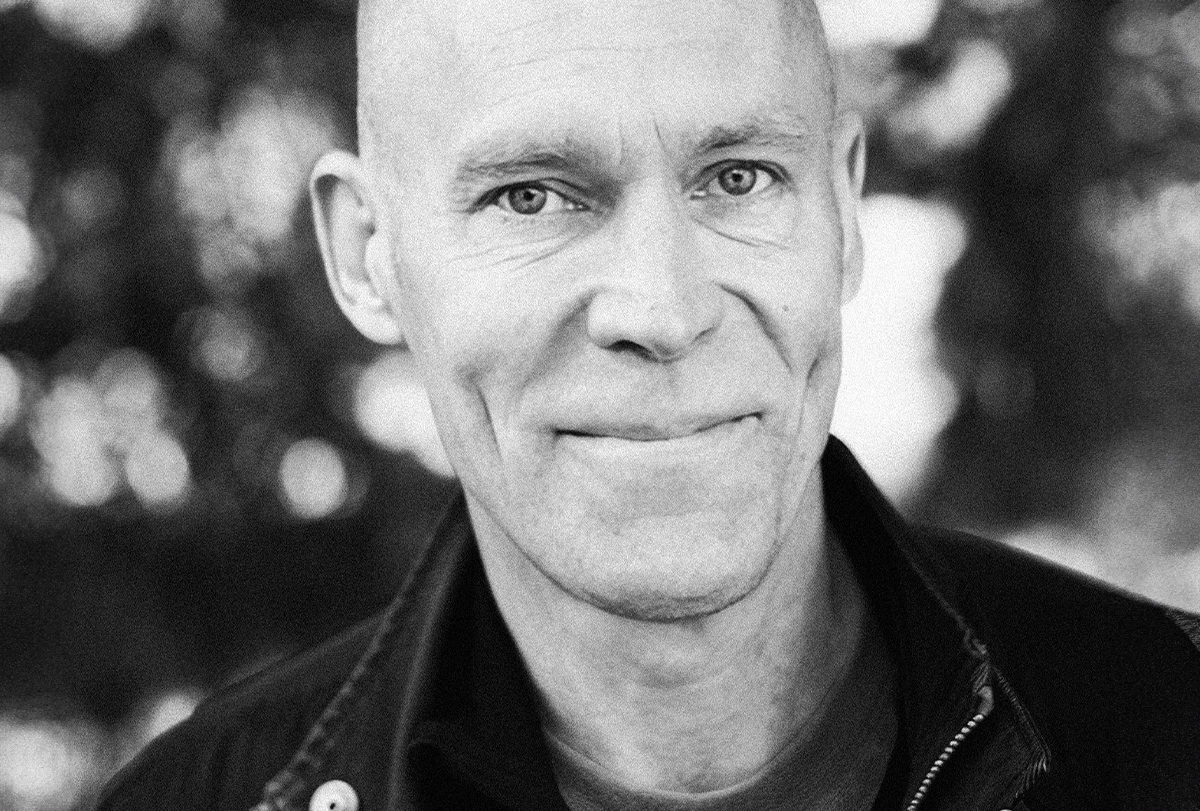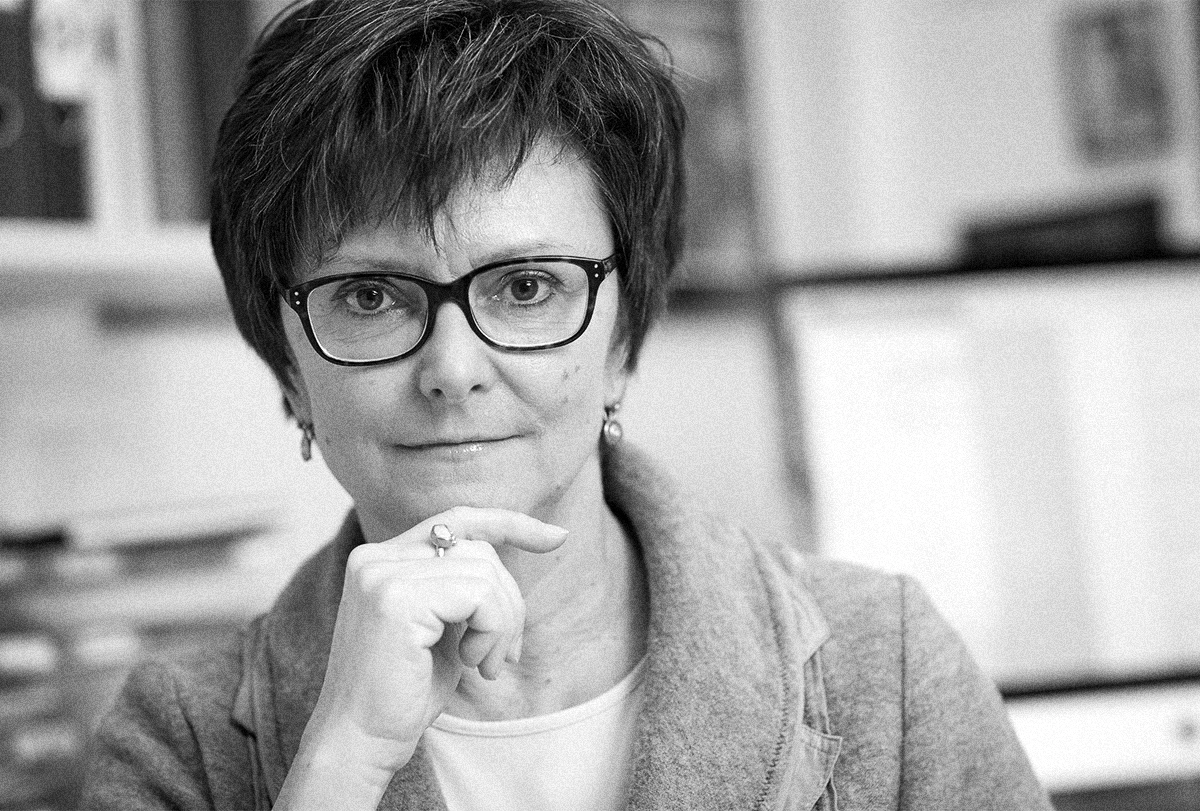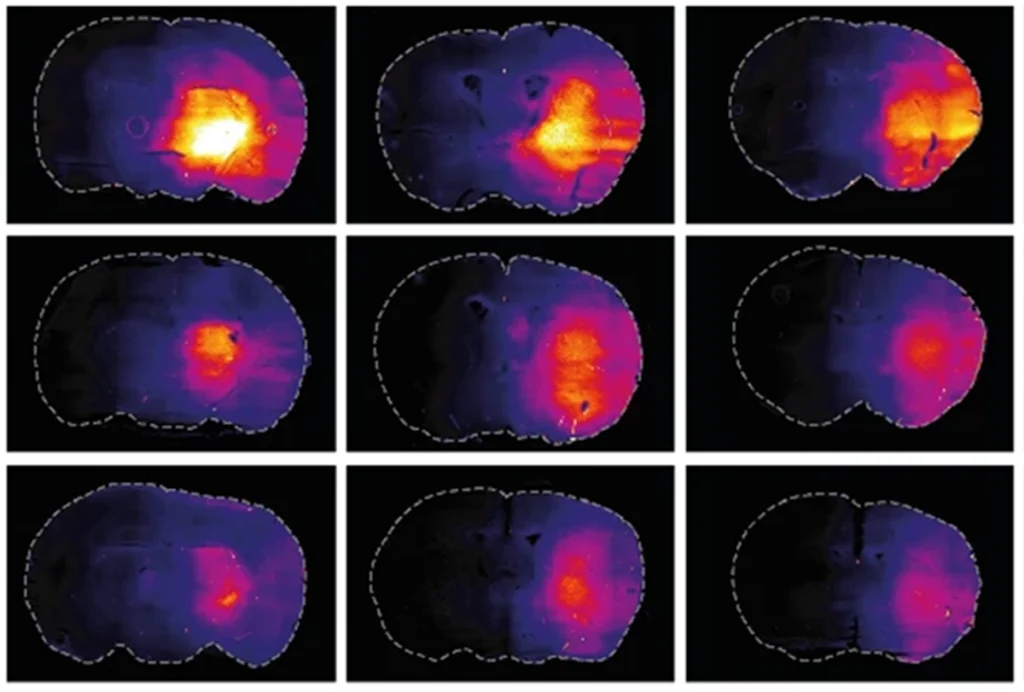Maiken Nedergaard’s power of disruption
The award-winning researcher’s discoveries have changed the way we think about the brain; that’s exactly what her critics dislike.

On a Wednesday morning in November, the last day of the 2023 Society for Neuroscience meeting, Maiken Nedergaard sat on a small stage at the front of a dimly lit convention-center ballroom. Occasionally, she sipped from a bottle of Diet Coke as she waited to be introduced as the first of four speakers in a session on the brain’s lymphatic and glymphatic systems.
Presiding over the session was moderator Helene Benveniste, a physician-scientist at Yale University who studies fluid flows in the central nervous system. Nedergaard didn’t need much of an introduction, Benveniste told the audience. The Danish neuroscientist is well known for her research on “glymphatics” — a term she helped coin more than a decade ago to describe a network of channels that, she and colleagues have proposed, carry cerebrospinal fluid (CSF) to and from the brain to wash away waste products.
Benveniste called Nedergaard “the inventor of the whole idea” behind the glymphatic model. “You can’t,” she said, “get this information from anyone better than Dr. Nedergaard.”
In her talk, Nedergaard gave a brief overview of glymphatics, comparing it to a plumbing system that brings in clean CSF and flushes out “dirty water.” She said that, during sleep, this brain washing system gets turned on. She said that glymphatic flow is suppressed both in neurological diseases and after traumatic brain injuries, the subject of one of her newest papers, which had just come out in Nature that day. And she explained to the 50 or so attendees that the work had serious implications. “Why should you care about this?” she asked. “You should probably care because diseases of aging are, to my mind, all diseases of dirty brains.”
When the session ended three hours later, attendees lined up to congratulate Nedergaard and thank her for the talk. One young scientist told her it was the highlight of the conference. Another congratulated Nedergaard on “a great paper.” A third gushed about Nedergaard’s “fantastic work.”
What nobody mentioned, or even seemed particularly aware of, was the other, far more contentious discussion around Nedergaard’s newer work on fluid flow in the brain, which has been happening online and in journal forums frequented primarily by brain scientists. There, critics have ardently challenged the very basics of Nedergaard’s research proposing the existence of a fourth, previously unknown layer surrounding the brain. She and colleagues assert that this layer, which they call SLYM, subdivides the space between meninges and affects the movement of fluids.
Among the online critics is Christer Betsholtz, a vascular biologist at Uppsala University and the Karolinska Institutet. He decided to post his critiques of the work on SLYM not only because he disagreed with the conclusions, but also because, in his view, the formal process of academic publishing takes too long to self-correct. “One reason for it,” he says, “is that opponents hesitate to speak up and challenge new sensational ideas and claims.”
People on both sides of the dispute have emphasized that the stakes are high: Understanding how, when and why cerebrospinal fluid moves through the brain could lead to new ways of preventing and treating neurological conditions, including Alzheimer’s disease. Though arguing over results is standard practice in science, this conversation has intensified in a way that has surprised even those involved. “I’ve seen disagreement, of course, at a distance, between others,” Betsholtz says, but “this level of debate or type of debate is new to me.”
Yet this is not the first time Nedergaard’s work has divided a field.
A
t 66, Nedergaard is compact, with straight, shoulder-length blond hair, rosy cheeks and a matter-of-fact manner. She grew up in Copenhagen (“I’m very Danish,” she says), where she earned a doctor of medical science degree from the University of Copenhagen. More excited by research than by clinical work, she spent the final year of her program at Cornell University Medical College in New York City, arriving in 1987.There, she met and eventually married Cornell neurologist and chief resident Steven Goldman, who taught Nedergaard how to culture brain cells, a skill that helped her launch research on astrocytes. Nedergaard and Goldman had their first two children in 1990 and 1992. When she was pregnant with their third in 1994, she decided that, to justify missing so much time with her children, she would pursue only work that could lead to better treatments for people. “I had the distinct idea that I was only going to do science if it was clinically important and nobody else was doing it,” she says. “I was not going to just publish papers to publish papers.”
She put out her first major paper that year, a solo-authored study in Science, at age 37. The study, which showed that astrocytes transmit signals to neurons, followed the 1990 discovery by researchers at Yale that astrocytes could signal to each other and helped dispel the long-held view, Nedergaard says, that astrocytes were just a kind of housekeeping cell that didn’t produce electrical activity.
As their family grew to include five children, Nedergaard and Goldman moved to Westchester, New York, and in 2003, to the University of Rochester in upstate New York. Nedergaard’s work, with its implications that astrocytes might help contribute to intelligence, blood flow and sensory information, generated thousands of citations. But she was growing frustrated that she couldn’t find any immediate clinical implications for human health.
By about 2010, she was thinking more about the role that astrocytes play in cleaning up after neurons. What, she wondered, cleans out the brain from a buildup of waste products, especially given that the brain seemed to lack lymphatic vessels?
That question led to a discovery that put Nedergaard in the neuroscience spotlight.

T
o investigate what cleans waste from the brain, she and neuroscientist Jeffrey Iliff, who was a postdoctoral researcher in Nedergaard’s lab at the time, used a then-new technology called two-photon microscopy to examine the flow of CSF through the central nervous system. The technique enabled them to see CSF flow in a live mouse’s brain at the level of individual cells and vessels, instead of having to cut into the skulls of living animals or look at brains that had been removed postmortem as in previous studies.In videos, Nedergaard, Iliff and their colleagues could see fluid being transported along the arteries through perivascular spaces, which include passageways around arteries and veins. It looked like the arterial pulsations were pumping CSF. Previous studies had suggested that this movement was some kind of artifact from how experiments were done. But the flow was too quick to be explained this way, Nedergaard says.
The study also offered an explanation for an observation about the molecule aquaporin-4 (AQP4), a water channel in the brain’s astrocytes. Scientists had long wondered why astrocytes in perivascular spaces had a feature that seemed to be specialized for water transport toward blood vessels, whereas the blood vessels themselves — including the blood-brain barrier — seemed to prevent water transport. In mice that were bred with a gene mutation that knocked out AQP4, Nedergaard and her team found, the flow of CSF into and out of the brain was much slower, suggesting that the molecule supported perivascular fluid transport.
And the study’s results indicated at least one reason for the patterns of flow to exist. When the scientists injected fluorescently labeled amyloid-beta — a peptide implicated in Alzheimer’s disease — into the brain, it traveled along perivascular spaces, suggesting there was a “passenger” on this clearance pathway. Nedergaard was struck by the results and the videos she and her colleagues had captured. “We immediately realized this is super important, and it hasn’t been described before,” she says.
Nedergaard remembered a talk she’d seen by Stanley Prusiner, a neurologist and biochemist who coined the term “prion” in 1982 to describe proteins that infect the brain, and who subsequently won the Nobel Prize for the research. He had said the word itself didn’t mean anything — it was just a name for the new concept. But naming it was one of the most important things he had done.
Nedergaard felt the same might be true for this new pathway. If they named it convective cerebrospinal fluid transport, for example, people would promptly forget what they were talking about.
At first, Iliff didn’t see the importance of giving it a name. “My thinking was, ‘I’ll just call it what it is — it’s a brain-wide perivascular network for cellular exchange,’” says Ilif, who is now at the University of Washington. “And then the 50th time that you said that in a conversation, it’s just like, ‘What am I doing?’”
It was Nedergaard’s husband, Goldman, who came up with the term “glymphatic,” a combination of glia, which are among the brain’s non-neuronal cells, and lymphatics. Nedergaard and her team submitted the paper first to Nature Medicine, which rejected it for lacking clinical relevance. Science Translational Medicine published it on 15 August 2012.
Though the 2012 paper attracted some media coverage, it was when Nedergaard and her colleagues published another paper in Science a year later showing that the glymphatic pathway is active primarily during sleep that Nedergaard began to gain major attention for both this research and the narrative that emerged from it. In interviews and talks, she calls the glymphatic system a dishwasher for the brain. Regarding sleep, she says, the glymphatic system works like a car mechanic; after a nightly tune-up, the brain runs better.
It was a story that was easy to understand, and the media latched on. Science ran a news article under the headline “Sleep: The Ultimate Brainwasher?” It named the discovery of the glymphatic system as one of its “Breakthroughs of the Year” in 2013. So did Forbes.
In the years since, Nedergaard has won a bevy of awards for her work on glymphatics, including ones from the American Stroke Association and the American Association for the Advancement of Science. The Eric K. Fernström Foundation awarded her the Nordic Fernström Prize, one of the largest awards for medicine in Scandinavia.
But even as the term has become entrenched in neuroscience, glymphatics has drawn criticisms that have, over time, split the field. There are experts who have dedicated their careers to working out the details of glymphatics and those who think the word shouldn’t exist.
“There are really just kind of two schools now. It’s like either you believe in it, and that’s your worldview, or you don’t,” says Steven Proulx, a neuroimmunologist at the University of Bern. But, he notes, there is “no other model that has emerged to explain clearance inside of the brain, so until someone comes up with a model that people can coalesce around, I don’t see it really dissipating.”
O
ver the past decade, Nedergaard has participated in the debates around glymphatics, responding to criticisms and questions with new papers and experiments. In 2014, she and Goldman established the Center for Translational Neuromedicine at the University of Copenhagen, while she also continued running her lab at the University of Rochester. Nearly a decade later, in January 2023, she published her latest field-quaking paper in Science, about SLYM.In collaboration with her University of Copenhagen colleague Kjeld Møllgård, Nedergaard and her team identified what they described as a fourth layer of the meninges in mouse brains. The term SLYM is an abbreviation for what they named the subarachnoid lymphatic-like membrane. In addition to the three known layers — the outer dura, inner pia mater and the arachnoid in the middle — Nedergaard and Møllgård proposed that SLYM divides the subarachnoid space below the arachnoid barrier layer into two CSF-filled compartments and facilitates the flow of freshly produced CSF along the perivascular spaces surrounding arteries. Soon, the study was garnering scientific praise and media coverage heralding a “previously unknown part of the brain.”
For a handful of researchers, however, the paper rang alarm bells. Britta Engelhardt is a neuroimmunologist, vascular biologist and expert on brain barriers at the University of Bern who has been critical of glymphatics and has questioned its existence. The day after the SLYM paper came out, Engelhardt says she sent an email to Betsholtz, her colleague and friend. She linked to the new Nedergaard paper and asked him if he had seen it.
At the time, Betsholtz was working on revisions of a study on brain fibroblasts, which he had submitted months earlier to Neuron. In it, he and his colleagues used single-cell RNA sequencing to create a molecular map of cell types in the meningeal layers of the mouse brain. His results revealed three clear membranes that separate the brain from the skull and are stacked like a sandwich.

The middle arachnoid layer is a mosaic of four cell types, and one of those cell types expresses Prox1, according to Betsholtz. He says Nedergaard was calling this Prox1-expressing membrane SLYM and differentiating it from the arachnoid. He concluded that the researchers had renamed part of an already-known membrane. “It didn’t take me more than 10 minutes to read through the paper and realize that they have gone completely wrong,” Betsholtz adds. “They have misinterpreted their own data.” (Nedergaard and her colleagues stand by their interpretation.)
This, Betsholtz thought, was going to have consequences — leading other researchers astray and wasting time, money and careers. It felt like a call to action. He was a senior researcher, and if he didn’t speak out, who would?
Betsholtz says he talked with Engelhardt, who had a paper of her own undergoing revisions with Nature Communications that also disagreed with Nedergaard’s new findings. Their first step was to consult with other experts in the field, beginning with some of the co-authors who appeared on one or both of the papers they were revising, including Proulx.
Proulx had a previous experience with Nedergaard’s group that, he says, made him suspect a conflict was brewing. In a 2018 study in Acta Neuropathologica, he and his colleagues reported, among other results, that clearance of CSF to lymphatic vessels was faster in mice that were awake and active than in mice that were anesthetized. This contradicted Nedergaard’s 2013 paper suggesting enhanced glymphatic function during sleep, Proulx says, instead indicating an alternative destination for CSF. In their 2018 paper, he and his colleagues called glymphatics “highly controversial.”
Soon after, Proulx says, he was invited to Rochester to give a seminar, and while there, he requested a meeting with Nedergaard, who scheduled Proulx to speak with her lab too. After the seminar, Proulx presented to a small group for about 45 minutes, with a contingent watching remotely from Copenhagen.
In the discussion period that followed the presentation, Proulx remembers facing criticisms about the resolution of his microscope from one of Nedergaard’s students, who argued that he couldn’t have seen perivascular flow because he didn’t have the correct technology to image it. Proulx disagreed with that, but his bigger problem was that the interaction “wasn’t a scientific debate,” Proulx says. “It was more them trying to tell me what I had done wrong and basically why my methods are not as sophisticated as theirs. It didn’t really feel like they were willing to listen to my side and come to some sort of agreement.”
Nedergaard says she remembers thinking that Proulx was flustered but that the discussion was both academic and polite, and she stands by the criticism. For Proulx, the experience stood out because of what he saw as a defend-at-all-costs approach, he says. He says he had seen the progression from skilled storytelling to mass acceptance of glymphatics, even when other groups didn’t agree with the science.
He did not want to see the same thing happen with SLYM.
B
etsholtz, Engelhardt, Proulx and others gathered their criticisms about the SLYM paper. On 11 January 2023, just days after the paper appeared, they sent the first of several letters to deputy editor Stella Hurtley at Science, who had put together a summary of the study.“We are writing because we consider the article by Møllgård et al. to be scientifically invalid and clinically irresponsible,” the critics wrote. “Nearly all of the claimed novel advances are based on incorrect interpretations of data and a lack of faithful reporting of what is already known in the literature.”
The critics also noted that a Wikipedia page for the SLYM layer had already popped up, and they wanted Hurtley to understand that she had been misled. They summarized five main scientific concerns. And they emphasized their dismay about the paper getting past peer review at a prestigious journal such as Science.
The journal directed the critics to its moderated forum, called eLetters, and their first post appeared there on 1 March 2023. From that point on, a mutual distaste between the two groups began unfurling online.
“As soon as this paper was published, we individually recognized that the claims were not convincingly supported by the data and that they contradicted findings in the same paper and many well-documented features of the meninges,” Betsholtz, Engelhardt and the others wrote. “We also realized that our diverse scientific backgrounds, expertise and familiarity with the meninges and methods used in the paper put us in an effective position and gave us an obligation to critically assess the authors’ data and claims.”
Their scientific concerns were numerous. For instance, Betsholtz says, a subdural space forms only when the border between the arachnoid and dura is damaged by a hemorrhage or a type of surgical trauma, and it is possible that the injection of microsphere tracers would be enough to do this. To propose a fourth meningeal membrane and two subarachnoid spaces, he adds, is like proposing that people have a third kidney after the discovery of a new type of kidney cell.
Nedergaard and Møllgård responded five days later. Their eLetter addressed the main critiques and suggested that the critics were inexperienced with the imaging techniques they had used. After acknowledging that “vehemence can sometimes accompany passionate interest,” Nedergaard and Møllgård noted their belief that the only way to advance science is through published research in academic journals, and with replication studies. Nedergaard says she thinks the debate should ensue in formal channels, not in online forums with “Twitter-level rigor.”
“As a broader point,” they wrote, “we would like to note the limitations of an unregulated online forum, in which unvetted and somewhat unhinged remarks, whose factual bases have been neither objectively validated nor independently sustained, can masquerade as critical review — in contrast to the careful, well-informed and unbiased peer review to which their object of scorn have already been subject.”
Betsholtz says he felt the reply was aggressive, and Engelhardt says she disliked the use of the word “unhinged.” It didn’t help that Nedergaard had also been quoted in a Danish newspaper article calling the repeated posting of criticisms a form of “scientific terrorism.”
“This is not how you can, in principle, advance a research field where people have findings that might be apparently discrepant,” Engelhardt says. “Our goal should be to solve this and not to start arguments like this. This makes it very hard.”
Meanwhile, over on the researcher news site Alzforum, an article appeared several days after the SLYM paper was published, with the title “And Then There Were Four: A New Meningeal Membrane Discovered.” In the comments section under the article, positive feedback soon appeared. “This is another exciting and thought-provoking work from the group of Maiken Nedergaard that calls for revision to our understanding of meningeal function and anatomy,” wrote Jonathan Kipnis of Washington University in St. Louis, along with his colleague Leon Smyth. Per Kristian Eide, of the University of Oslo, called the paper “groundbreaking.”
A week later, Betsholtz and his cohort posted their criticisms under the article, foreshadowing the content of the eLetters, and soon they were able to make their case through more formal channels. In September 2023, eight months after the SLYM paper came out, Alzforum published a new post with the title, “Not So Fast—The Brain Has Three Meningeal Membranes After All.” The article highlighted Betsholtz and Engelhardt’s now newly published papers, which had been revised to include reactions to the SLYM paper.
I
n some ways, the battle over SLYM evokes some of the tension that followed the initial publications about — and naming of — glymphatics. Iliff remembers being at a Gordon conference on the blood-brain barrier not long after the first glymphatics paper came out in August 2012. One morning between meetings, a senior member of the blood-brain barrier field asked him to join colleagues for a discussion after lunch. In a large, mostly empty common area that afternoon, as Iliff remembers it, he found about 10 scientists sitting around a big table. “You need to explain yourself,” he remembers someone saying to him.For the next 90 minutes or so, he fielded their questions. There seemed to be a general impression among the group, Iliff recalls, that what Nedergaard and Iliff reported had been described years earlier by others, Iliff says. The “naming” of it “might have struck people as a particularly crass version of appropriation,” Iliff says.
As a newcomer to the field at the time, Iliff found the vibe in the room to be “antagonistic,” and “not entirely impersonal,” he says. “As a senior investigator now,” he adds, “I would never place a junior faculty member in that kind of a position.”
Iliff remembers Engelhardt being one of the senior researchers sitting at that table. And though Engelhardt doesn’t remember this particular meeting, one of her major concerns early on was the word “glymphatics,” which she says felt misleading. The word sounded too much like lymphatics, which refers to fluids and cells traveling inside lymphatic vessels, whereas glymphatics as proposed by Nedergaard’s group suggested the movement of CSF through perivascular spaces along arteries and veins, not in vessels at all.

The science, Engelhardt says, raised her eyebrows in other ways, too. She wondered how injections of high volumes of tracer would alter pressure gradients in the brain. It didn’t make sense to her that AQP4 would drive water into the brain at the arterial side and out of the brain on the venous side. And she questioned how the mixing of fluids through glymphatics could preserve immune privilege in the central nervous system.
Engelhardt says she had seen Nedergaard talk about the work several times and remembers asking Nedergaard about this last point specifically. But, Engelhardt says, Nedergaard consistently responded with “I cannot explain this” or “I don’t know.” Nedergaard says she doesn’t remember the suggested exchanges with Engelhardt, that she always responds to questions, and that there is a lot she still doesn’t understand.
Because Nedergaard was at another meeting during the Gordon conference, many of those challenges landed on Iliff. “There were 5,000 questions back then from every single person who read that,” Engelhardt says. “The poor first author, Jeff Iliff. He has always been coming to the brain barriers meetings, and he was really confronted back then with a lot of questions and critiques, like, ‘What are you telling us here?’”
S
LYM as a concept is still new. But just like “glymphatics” did a dozen years ago, the term has rapidly entered the scientific lexicon. In the months since the first paper came out, multiple media articles have mentioned it. There was also a new paper by Nedergaard, Møllgård and their colleagues, published in December 2023, that they said confirms and elaborates on the fourth meningeal membrane, and again has SLYM in the title.And yet, much like glymphatics, the work has drawn a handful of vocal critics who disagree with both the concept and the name. That includes Betsholtz, who says he disagrees with the second SLYM paper, too.
If the history of glymphatics offers any clues, resolution won’t come any time soon. Back in 2015, Kipnis published a paper showing that there were in fact lymphatic vessels that drain fluid and immune cells out of the brain. Though the paper drew its critics, the discovery was, like Nedergaard’s glymphatics work, named a breakthrough study finalist and among the top 10 papers of the year by multiple outlets, and Kipnis traveled that year, giving talks. Some people complained to him about the concept of glymphatics. It popularized science too much, some said, and they didn’t want to use the word.
Kipnis disagreed then, and still does. Nedergaard’s ideas have drawn important attention to long-overlooked areas of neuroscience, he says. With glymphatics, she “generated a conceptual framework of how fluid goes through the brain, and she gave it a name,” Kipnis says. “This is a super complicated story of the brain, which very few people touched, and very few cared about, until that conceptual framework became available.”
When it comes to SLYM, Kipnis says, there is evidence for it, but more experiments are needed to understand what’s going on. Part of the problem for both SLYM and glymphatics, Benveniste says, is that the science of the blood-brain barrier and fluid flows is tricky. Scientists can’t just look at the brain and see what’s happening. They have to inject tracers and interpret results, making the brain in some ways like the paradox of Schrödinger’s cat — when you look at it, you change it. “I wish there was an experiment that showed exchange and clearance between CSF and interstitial fluid totally robustly and unequivocally, but there hasn’t been a really good noninvasive experiment yet,” she says. “It’s a holy grail.”
As debates about the science continue, so do disagreements about how science works best. Big ideas can draw interest to overlooked topics, Eide argues. “In science, you need some kind of disruptive changes to actually impact a field,” he says. “For this particular area, it has been very useful to have a person like Maiken Nedergaard because this field got limited attraction, and, in a way, then it was placed on the neuroscience map.”
Her critics believe that’s part of the problem.
Engelhardt, for one, is not planning to back down, given everything that is at stake. To her, a catchy name like SLYM is an “advertisement,” not science. “There are people now picking this up,” she says. “I know, already, two people doing a Ph.D. thesis on this membrane. It doesn’t exist.”
Nedergaard, too, shows little inclination of changing her approach. How, she asked, can you talk about an idea if it doesn’t have a name? “You throw it out there to have a word, and then you see,” she says. “It’s a way of communicating.”
Meanwhile, Nedergaard continues to run labs on two continents. On a sunny afternoon in mid-December, she left her Rochester lab to take her three dogs for a walk. She’s not a huge dog person and is allergic to most. It was her children who wanted them, and who named them: Coco, Blue and Sisi.
“I didn’t want to name them,” Nedergaard says. “It’s not like I’m crazy about naming.”
Recommended reading

New method reignites controversy over brain clearance during sleep

The Transmitter ’s Rising Stars of Neuroscience 2025

The Transmitter’s New Lab Directory
Explore more from The Transmitter

Dispute erupts over universal cortical brain-wave claim
Waves of calcium activity dictate eye structure in flies
